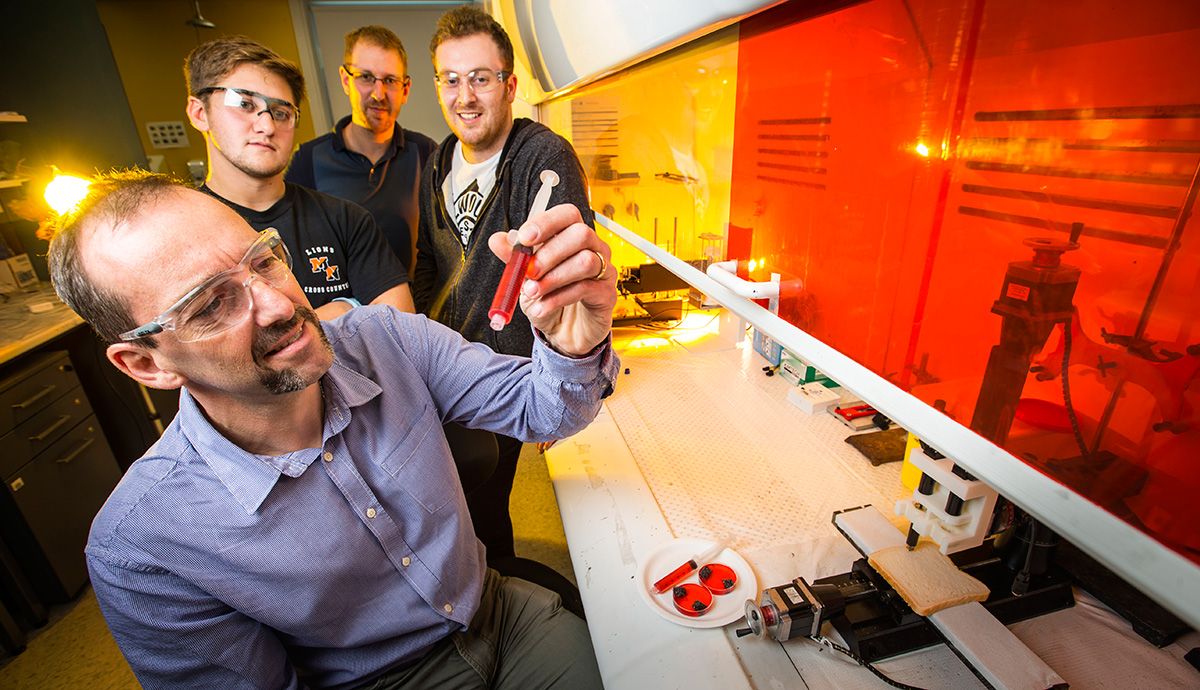September 1, 2015
Electronics for Breakfast: 3D printed conducting vegemite
Scientists 3D-print electrically charged Vegemite to create futuristic edible electronics.
When materials engineer (pictured above, front) was working on developing soft and edible materials for applications in soft robotics and bio-medicine, he only needed to look at his breakfast table for inspiration.
The iconic Australian Vegemite is ideal for 3D printing edible electronics, Professor in het Panhuis, from the UOW-based , said.
“It contains water so it’s not a solid and can easily be extruded using a 3D printer. Also, it’s salty, so it conducts electricity.”
In electronics, a 'breadboard' is used to create and test circuits, so in this case, why not a real bread-board?
In the below video, Professor in het Panhuis 3D-prints Vegemite on bread and completes the circuit, lighting up an LED.
The spread is safe to eat and you can imagine how they can be used to make ingestible biomedical sensors that perform a function (in the stomach for example) and are then processed by the body in a natural way.
Professor in het Panhuis, a speaker at UOW’s recent Big Ideas Festival, has also 3D printed electrically charged jelly (as shown in the above photo).
Other applications for these edible electronics include kits to teach children about electronic circuits – that they can eat afterwards.
